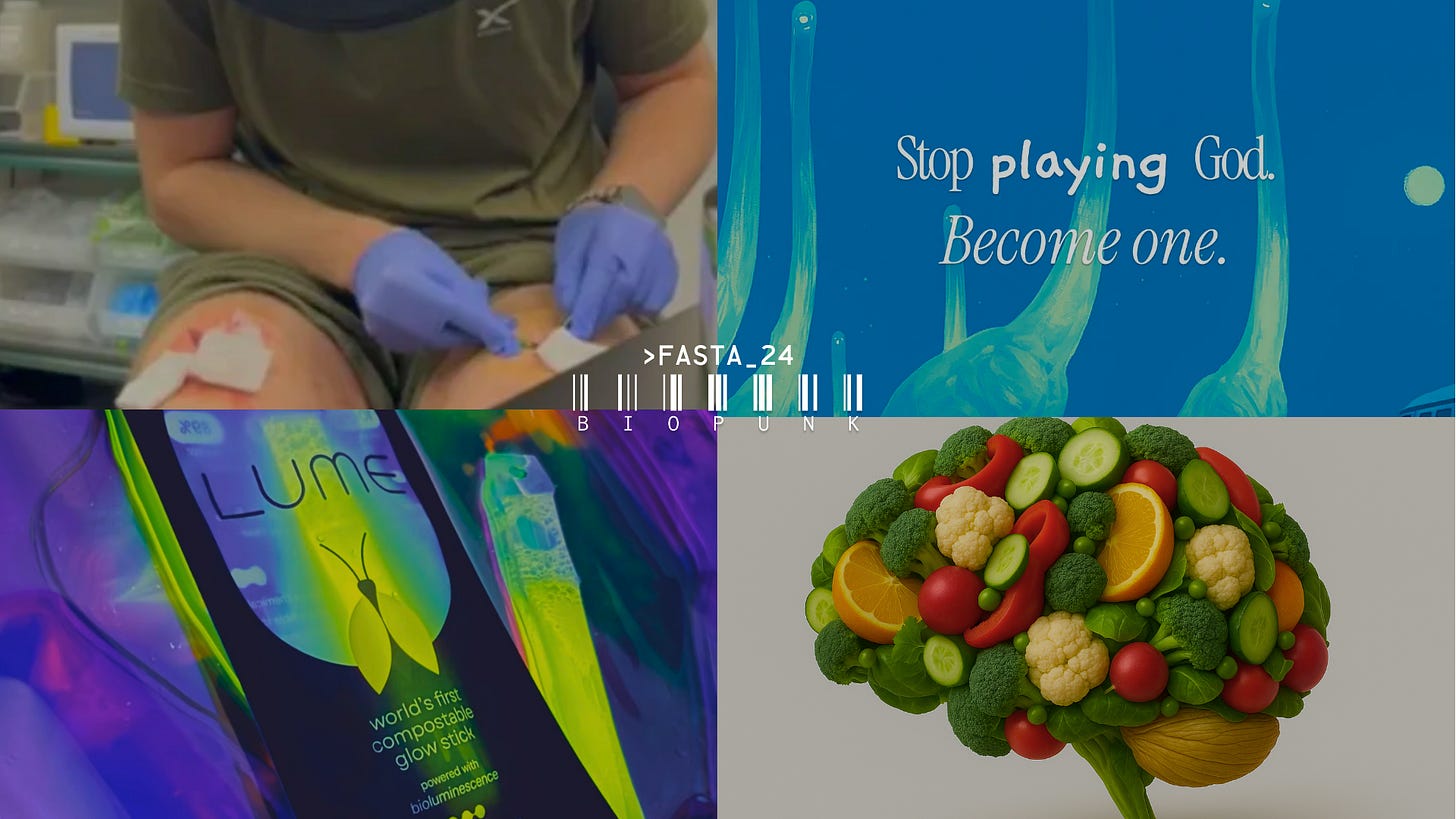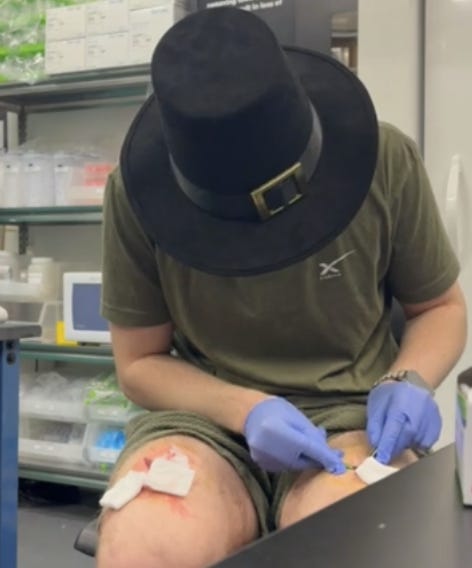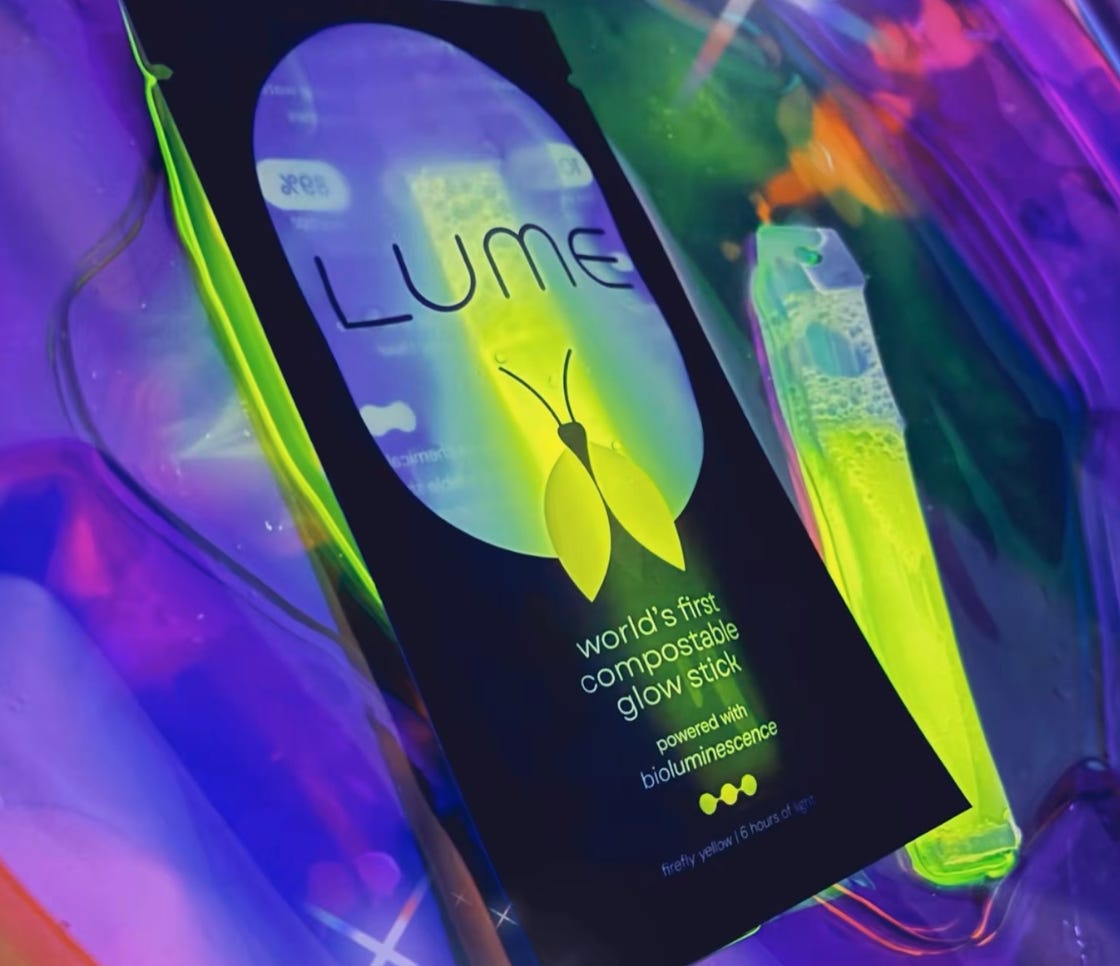>FASTA_24
The biofounder who cut open his leg; LuxBio sells glow sticks to NASA; Geltor's new consumer peptides; Keto x schizophrenia study; CRISPR-associated transposases; Open CRISPR-1; Become a God
>FASTA: weekly short reads of the global biotech ecosystem | Papers and patents, acquisitions and bankruptcies, biotech philosophy | Read in under 5 min | Follow on LinkedIn, X, YouTube, and Instagram! | Versión en Español
Pilgrim is proud to sponsor >FASTA! We’re developing the next generation of military medicine to meet the operational demands of modern warfare—moving beyond theory and bringing biotechnology from the benchtop to the battlefield.
1/10: Our sponsor cut open his leg and raised $4.3M
While Palantir and Andruil build defense software and hardware, soldiers still use gauze and die primarily of hemorrhage on the battlefield. Done with Nature papers, dusty patents, and PowerPoint founders, Jake Alder from Pilgrim Labs showed his investors how their rapid wound-healing nanotech works on himself.
Kingsfoil (yes, from The Lord of the Rings) uses electrical currents to accelerate clot formation and guide tissue-regenerating cells to the injury site. This and other products in their pipeline — which include lipid nanoparticles and a biosurveillance system — could get expedited approval through a special process between the DoD and the FDA, and be offered to consumers for medical use in the future.
2/10: Why LuxBio sells glow sticks to NASA
Glow sticks. You’ve seen them at concerts, your aunt’s wedding, and emergency cases (hopefully just in movies). When the US military developed them, they used chemicals that are now illegal. However, still today, 17 out of 20 surveyed glow sticks have been found to contain outlawed chemicals, and in France alone, 2.4 million people have called poison control centers after exposure to glow stick liquid in the past ten years.
Despite our weird quirk of making everything glow, biotechnologists haven’t seen beyond luciferase, which can’t last long enough to see Aunt Mary’s breakdance at 2 am. Hence LuxBio engineered a bioluminescent enzyme to have a slower decay curve, reduced affinity to inhibitors, increased thermostability, and increased production yields. NASA was, indeed, their first customer.
3/10: Geltor is back in the game with consumer peptides
After the widely felt slump in consumer biotech, Geltor has announced that their revenue grew ~75% over the course of their new fundraising round. They have launched a vegan collagen polypeptide in LatAm, signed a collab for their peptide AI design platform, and received the first and only “no questions” letter for their ingestible biotech type 21 collagen (PrimaColl®).
4/10: Prepare for more biotech defense bills
Keep reading with a 7-day free trial
Subscribe to Biopunk to keep reading this post and get 7 days of free access to the full post archives.






